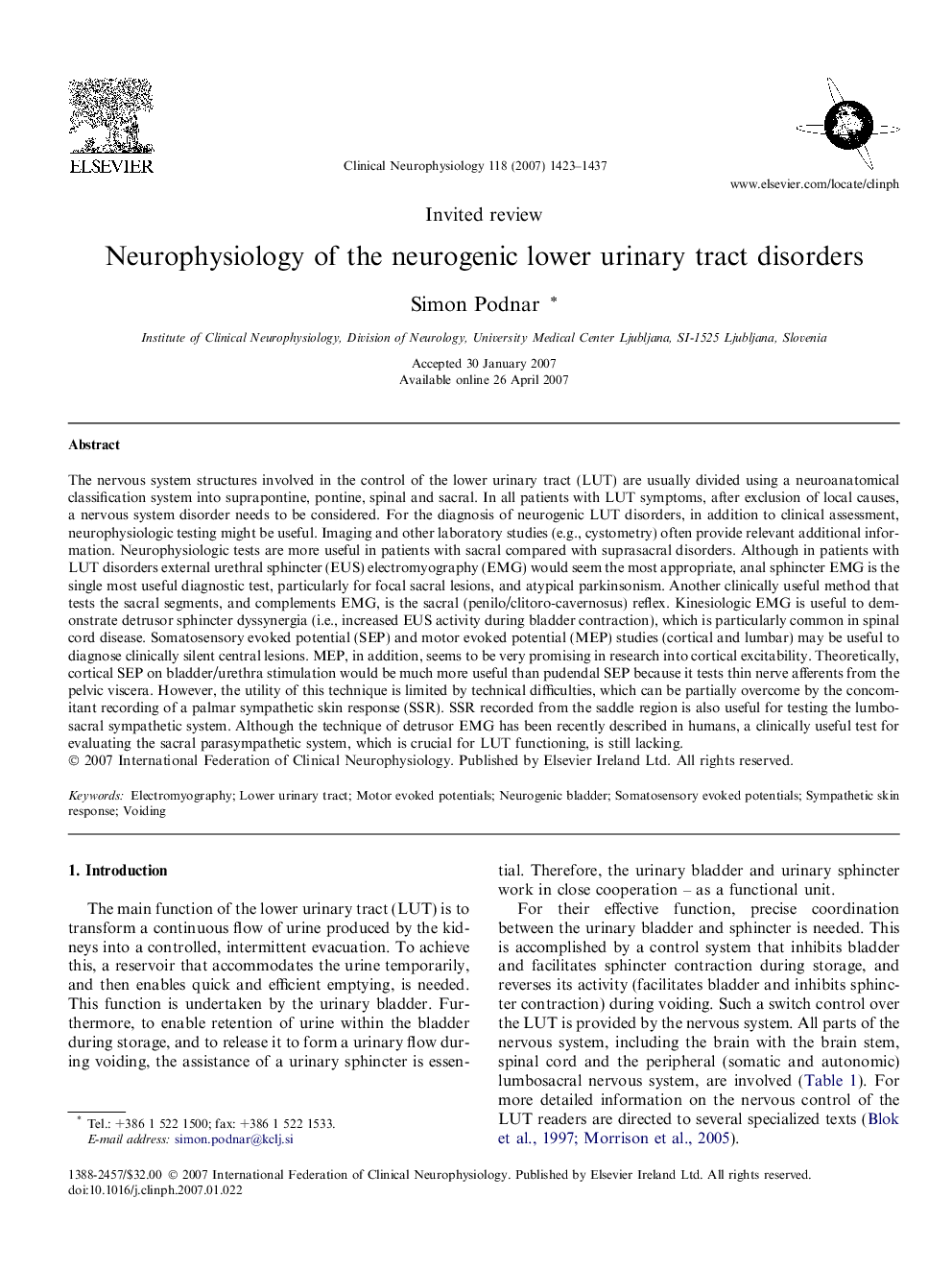| کد مقاله | کد نشریه | سال انتشار | مقاله انگلیسی | نسخه تمام متن |
|---|---|---|---|---|
| 3047615 | 1185061 | 2007 | 15 صفحه PDF | دانلود رایگان |

The nervous system structures involved in the control of the lower urinary tract (LUT) are usually divided using a neuroanatomical classification system into suprapontine, pontine, spinal and sacral. In all patients with LUT symptoms, after exclusion of local causes, a nervous system disorder needs to be considered. For the diagnosis of neurogenic LUT disorders, in addition to clinical assessment, neurophysiologic testing might be useful. Imaging and other laboratory studies (e.g., cystometry) often provide relevant additional information. Neurophysiologic tests are more useful in patients with sacral compared with suprasacral disorders. Although in patients with LUT disorders external urethral sphincter (EUS) electromyography (EMG) would seem the most appropriate, anal sphincter EMG is the single most useful diagnostic test, particularly for focal sacral lesions, and atypical parkinsonism. Another clinically useful method that tests the sacral segments, and complements EMG, is the sacral (penilo/clitoro-cavernosus) reflex. Kinesiologic EMG is useful to demonstrate detrusor sphincter dyssynergia (i.e., increased EUS activity during bladder contraction), which is particularly common in spinal cord disease. Somatosensory evoked potential (SEP) and motor evoked potential (MEP) studies (cortical and lumbar) may be useful to diagnose clinically silent central lesions. MEP, in addition, seems to be very promising in research into cortical excitability. Theoretically, cortical SEP on bladder/urethra stimulation would be much more useful than pudendal SEP because it tests thin nerve afferents from the pelvic viscera. However, the utility of this technique is limited by technical difficulties, which can be partially overcome by the concomitant recording of a palmar sympathetic skin response (SSR). SSR recorded from the saddle region is also useful for testing the lumbosacral sympathetic system. Although the technique of detrusor EMG has been recently described in humans, a clinically useful test for evaluating the sacral parasympathetic system, which is crucial for LUT functioning, is still lacking.
Journal: Clinical Neurophysiology - Volume 118, Issue 7, July 2007, Pages 1423–1437